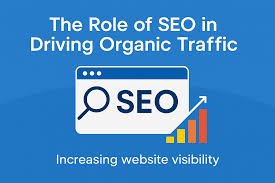In the fast-paced world of digital marketing, understanding and implementing the best SEO strategies can make or break your online presence. Whether you run a small blog or a large e-commerce brand, SEO remains the backbone of organic growth. Let’s dive into the most effective ways to enhance your website’s visibility, attract qualified leads, and outrank your competitors.
Understanding the Importance of SEO
Before exploring the best SEO strategies, it’s crucial to understand why SEO matters. Search Engine Optimization is more than just adding keywords; it’s about creating value for users and signaling relevance to search engines. When executed correctly, SEO improves website credibility, boosts user engagement, and drives long-term growth without relying on paid advertising.
1. Conduct Thorough Keyword Research
Every successful SEO campaign begins with keyword research. It helps you understand what your target audience is searching for and how you can meet their needs. Focus on long-tail keywords that reflect specific search intent. For instance, instead of “SEO tips,” use “best SEO strategies for small businesses.” These keywords are less competitive and attract users who are closer to making a decision.
How to Find the Right Keywords
-
Use tools like Google Keyword Planner, Ahrefs, or SEMrush.
-
Analyze competitor websites to identify keyword gaps.
-
Focus on intent—informational, navigational, or transactional.
-
Integrate your long-tail keyword naturally throughout your content.
2. Optimize On-Page Elements
One of the best SEO strategies is ensuring your on-page elements are fully optimized. Search engines analyze various components of your web pages to determine relevance and quality.
Key On-Page Optimization Tips
-
Use descriptive and keyword-rich title tags and meta descriptions.
-
Include your long-tail keyword in the first 100 words of the article.
-
Add relevant headers (H2s and H3s) for better content structure.
-
Use short, readable URLs that include your primary keyword.
-
Optimize images with descriptive alt text.
Remember, on-page SEO is about both humans and algorithms. Create content that is easy to read, informative, and engaging.
3. Create High-Quality, Engaging Content
Content is still king, and that will never change. One of the best SEO strategies involves producing valuable, original content that satisfies search intent. The more useful your content, the more likely it is to earn backlinks and shares.
Tips for Creating SEO-Friendly Content
-
Write in an active voice and maintain a conversational tone.
-
Use transition words like “therefore,” “furthermore,” and “however” to improve flow.
-
Break content into short paragraphs and bullet points for easy scanning.
-
Include visuals—images, infographics, or videos—to enhance engagement.
-
Update older posts regularly to keep information fresh.

4. Build Quality Backlinks
Backlinks remain one of the top ranking factors. They signal to search engines that your website is trustworthy and authoritative. However, not all backlinks are equal. Focus on earning links from relevant and reputable websites.
How to Build Strong Backlinks
-
Guest post on niche-relevant blogs.
-
Collaborate with influencers and industry experts.
-
Create shareable content like original research or case studies.
-
Submit your site to trusted online directories.
-
Use broken link building to replace outdated links on other sites with your content.
Building backlinks naturally takes time, but the payoff is worth the effort.
5. Improve Technical SEO
Technical SEO ensures that your website is accessible, fast, and easy for search engines to crawl. A solid technical foundation supports all your other SEO efforts.
Key Technical SEO Practices
-
Optimize site speed by compressing images and using a content delivery network (CDN).
-
Ensure your site is mobile-friendly and responsive.
-
Fix broken links and eliminate duplicate content.
-
Use structured data markup (Schema) to help search engines understand your content.
-
Create an XML sitemap and submit it to Google Search Console.
By improving your technical performance, you enhance both user experience and search visibility.
6. Focus on User Experience (UX)
Search engines prioritize websites that deliver great user experiences. Therefore, optimizing for UX is one of the best SEO strategies you can adopt.
Ways to Enhance UX
-
Simplify your website navigation.
-
Ensure quick page loading times.
-
Use clear calls-to-action (CTAs).
-
Maintain consistent branding and design.
-
Make your website accessible to all users.
When visitors stay longer on your site and engage with your content, search engines view it as a positive ranking signal.
7. Monitor Performance and Adjust Strategies
SEO is not a one-time effort. The digital landscape changes constantly, so monitoring your performance and adjusting your tactics is essential.
Tools to Measure SEO Performance
-
Google Analytics – to track traffic, bounce rates, and conversions.
-
Google Search Console – to monitor indexing issues and keyword rankings.
-
Ahrefs or SEMrush – to evaluate backlinks and competitor strategies.
Analyze what’s working and refine what’s not. Staying consistent and adaptable ensures your SEO efforts continue to pay off.
Conclusion
Implementing the best SEO strategies requires consistency, creativity, and a user-first mindset. From keyword research and on-page optimization to link building and UX improvements, each element plays a vital role in your overall success. Remember, SEO is a marathon, not a sprint. When you prioritize quality, relevance, and user satisfaction, your website will naturally climb the search rankings—and stay there.
By applying these best SEO strategies, you’ll build a strong online presence, attract the right audience, and achieve sustainable growth in the ever-evolving digital world.











